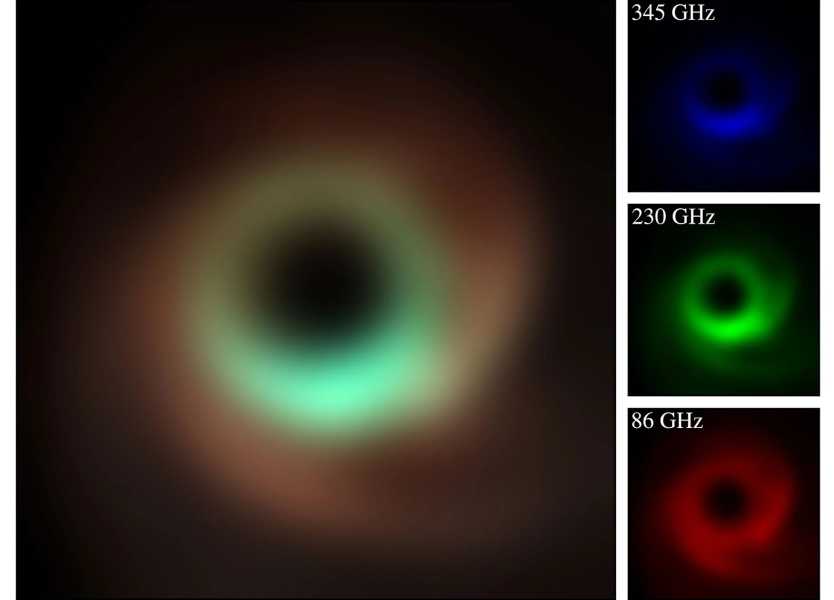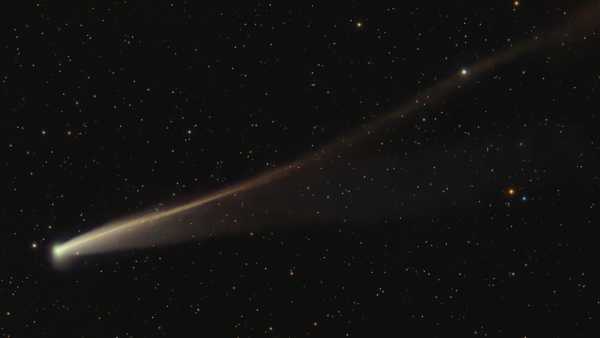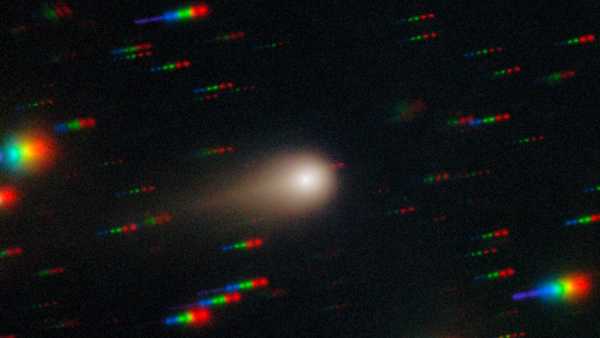
Simulated image of the supermassive black hole in M87, taken at different frequencies.
Astronomers using the Event Horizon Telescope have developed a new method for surveying the radio sky at multiple frequencies, meaning we may soon be able to obtain colour images of supermassive black holes.
Color is a fascinating concept. In physics, it can be said that the color of light is determined by its frequency or wavelength. The longer the wavelength or the lower the frequency, the closer to the red end of the spectrum the light is. As you move toward the blue end, the wavelengths become shorter and the frequencies become higher. Each frequency or wavelength has its own unique color.
Of course, we don’t perceive it that way. Our eyes detect color thanks to three different types of cones in the retina that are sensitive to frequencies of red, green, and blue light. Our brains then process this information to create a color image. Digital cameras work in a similar way. They have sensors that detect red, green, and blue light. Your computer screen then uses red, green, and blue pixels to trick our brains into perceiving a color image.
You may like
Sourse: www.livescience.com





